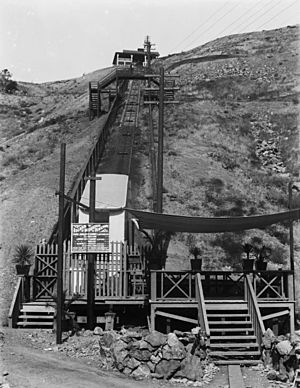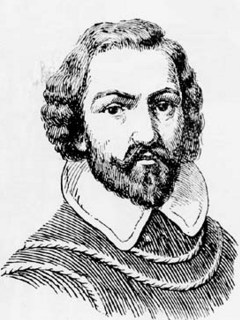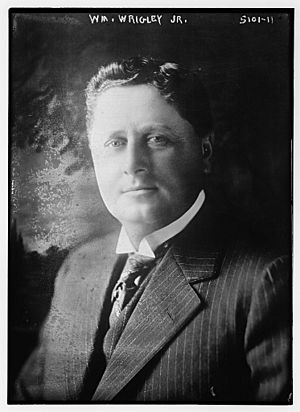History of Santa Catalina Island (California) facts for kids
The history of Santa Catalina Island, California, is a fascinating journey that began with its first residents, the Native Americans. They called the island Pimugna or Pimu and themselves the Pimugnans or Pimuvit. Later, European explorers arrived and claimed the island for Spain. Over time, ownership of the island changed hands, first to Mexico and then to the United States. For many years, the island was used for secret activities like smuggling, hunting otters, and even searching for gold.
In the 1920s, a chewing gum businessman named William Wrigley, Jr. helped turn Catalina into a popular tourist spot. Most of the fun activities were centered around the town of Avalon, California. Since the 1970s, a group called the Catalina Island Conservancy has managed most of the island, helping to protect its natural beauty.
Contents
Early Island Life
Before Europeans arrived, the island was home to the Tongva people, also known as the Gabrielino tribe. They lived in villages near what is now San Pedro and Playa del Rey on the mainland. They often traveled to Catalina for trade. The Tongva people called the island Pimu or Pimugna, and they called themselves the Pimuvit or Pimugnans.
Scientists have found signs that Pimugnan settlements existed as far back as 7000 BCE. The Pimugnans lived in many places across the island, with their largest villages located at the Isthmus, and where Avalon, Shark/Little Harbor, and Emerald Bay are today.
The Pimugnans were famous for finding, shaping, and trading a special type of rock called soapstone. Catalina Island had lots of this material. Soapstone was very popular for making stone bowls for cooking and was traded all along the California coast.
Archaeologists have learned a lot about these tribes by studying ancient trash piles called middens. These middens are mounds of broken abalone shells. Experts believe there are over 2,000 middens on Catalina Island. Evidence from these sites suggests that around 2000 BCE, about 2,500 people lived on the island.
European Discoveries
The first European to visit the island was a Portuguese explorer named Juan Rodríguez Cabrillo. He was sailing for Spain. On October 7, 1542, he claimed the island for Spain and named it San Salvador, after his ship. Some people even think Cabrillo might be buried on Catalina.
More than 50 years later, another Spanish explorer, Sebastián Vizcaíno, found the island again on November 24, 1602. This was the day before Saint Catherine's Day, so Vizcaíno renamed the island in her honor.
When the Spanish started settling California, the Pimugnan people faced many challenges. They became sick from new diseases they had never encountered before. Their trading and social networks were also disrupted by the new Spanish missions. By the 1830s, all the native people on the island had either passed away or moved to the mainland to work at the missions or on ranches.
Spanish priests thought about building a mission on Catalina, but they decided against it because there wasn't enough fresh water. Even though Spain claimed Catalina Island, they couldn't stop foreign ships from visiting. So, the island became a base for many visitors. Hunters from places like the Aleutian Islands, Russia, and America set up camps to hunt otters and seals for their valuable fur. These furs were then sold for high prices in China.
Smuggling also happened on the island for a long time. Pirates found that Catalina's many hidden coves, its closeness to the mainland, and its small population made it a perfect spot for illegal activities. There's even a place called China Point on the southwestern end of Catalina, named because it was once used by smugglers bringing in Chinese immigrants.
Mexican Ownership and a Gold Rush Dream
In 1846, the Mexican governor, Pío Pico, gave the Island of Santa Catalina as a land grant to Thomas M. Robbins. Robbins was a sea captain who started a small ranch on the island. He later sold it in 1850 to José María Covarrubias. The island was eventually owned by James Lick in 1864, and his family controlled it for about 25 years.
Catalina Island even had a short-lived gold rush! Three otter hunters, George Yount, Samuel Prentiss, and Stephen Bouchette, were involved. Yount found some promising rock samples before he passed away in 1854. Prentiss, the first non-native person to live permanently on Catalina, spent 30 years looking for a buried gold treasure but never found it. Just before he died, he told Stephen Bouchette about the treasure.
News of Yount's samples and Bouchette's claims brought many hopeful miners to the island. By 1863, small boom towns appeared in the hills. In less than a year, many mining claims were made, and 70 miners were actively digging. They dug tunnels by hand and lived in camps with only one store and a saloon. They even used homing pigeons to send messages to the mainland in just 45 minutes, while regular mail took 10 days!
In 1864, the United States government ordered everyone off the island. They were worried that people supporting the Confederacy during the American Civil War might use the island to prepare privateer ships. A small group of Union soldiers was stationed at the Isthmus for about nine months. Their old barracks are still the oldest building on the island and are now home to the Isthmus Yacht Club. Even though it's not clear if there was ever much gold on Catalina, the idea of a gold treasure kept people excited for decades.
Developing Catalina as a Resort
In the 1860s, a German immigrant named Augustus William Timms ran a sheep farm on Catalina. His boat, the Rosita, also took people across the channel to Avalon Bay for swimming and fishing. The settlement in Avalon was even called Timms' Landing for a while. By 1883, there were thirty tents and three wooden buildings there.
By the late 1800s, the island was mostly empty except for a few cattle herders. But its location, only 20 miles (32 km) from Los Angeles, a rapidly growing city, made it perfect for becoming a vacation spot.
The first person to try and turn Avalon into a resort was George Shatto, a real estate investor. Shatto bought the island for $200,000 in 1887. He created the settlement that would become Avalon and built the town's first hotel, the original Hotel Metropole, and a pier. Shatto's sister-in-law, Etta Whitney, came up with the name Avalon. She said it meant "Bright gem of the ocean" or "Beautiful isle of the blest," from a poem about King Arthur.
Shatto planned Avalon's streets and introduced it to the public as a vacation spot. He held a real estate auction in Avalon in 1887 and bought a steamship for daily trips to the island. In the summer of 1888, the small pioneer village opened as a busy resort town. However, Shatto eventually had to give the island back to the Lick estate because he couldn't pay his loan.
Avalon's oldest building, the unique Holly Hill House, was built in 1888. Peter Gano, the engineer who created Catalina's first freshwater system, built it himself. He used an old circus horse named Mercury to haul materials up the hill. When it was finished in 1889, he asked the woman he loved to join him, but she didn't want to move to an island. So, he lived there alone. After being repaired from a fire in 1964, it's now a famous landmark in Avalon.

In 1891, the sons of Phineas Banning bought the island from the James Lick estate. They created the Santa Catalina Island Company to develop it as a resort. The Banning brothers made Shatto's dream come true by building many tourist facilities in Avalon. They built a dance pavilion, added to the Hotel Metropole and the steamer-wharf, built an aquarium, and created the Pilgrim Club (a gambling club for men).
The Bannings also wanted to show off the rest of the island. They paved the first dirt roads into the island's center, where they built hunting lodges and offered stagecoach tours. They also made areas around Avalon like Lovers Cove, Sugarloaf Point, and Descanso Beach easy for tourists to reach.
However, their plans faced a major setback on November 29, 1915, when a fire destroyed half of Avalon's buildings, including six hotels and several clubs. The Bannings tried to rebuild, but they ran into financial problems, especially with tourism declining during World War I. In 1919, they had to sell parts of the island.
Wrigley's Vision for Catalina
One of the main people who bought shares from the Bannings was chewing-gum millionaire William Wrigley, Jr.. Wrigley visited Catalina with his family and immediately fell in love with the island. In 1919, he bought almost all the shares until he owned most of the Santa Catalina Island Company. Wrigley worked hard to protect and promote the island, investing millions of dollars in new buildings and attractions. He even built a home overlooking Avalon on Mount Ada, named after his wife, so he could watch over his projects.
When Wrigley bought the island, only two steamships, the Hermosa II and the SS Cabrillo, brought people to Catalina. To encourage more visitors, Wrigley bought another steamship, the SS Virginia, and renamed it the SS Avalon. He also designed a new steamship, the SS Catalina, which launched on May 3, 1924. These ships brought many passengers to Catalina for years.
One of Wrigley's first big projects was to build a new and better dance pavilion for tourists. He used Sugarloaf Point, which the Banning Brothers had already cleared, to build the Sugarloaf Casino. It was a ballroom and also Avalon's first high school. But it quickly became too small. In 1928, the Sugarloaf Casino was torn down to make way for a new, larger one. Sugarloaf Rock was even blasted away to give the new Casino a better ocean view.
On May 29, 1929, Wrigley completed the new Catalina Casino, built in the beautiful Art Deco style. The lower level of the Casino has the Avalon Theater. The upper level has the world's largest circular ballroom, with a dance floor that is 180 feet (55 m) across! In the 1930s, many famous musicians played at the Casino Ballroom.
Wrigley also tried to get attention for the island through events. Starting in 1921, the Chicago Cubs baseball team, which Wrigley also owned, used the island for their spring training. The players stayed at the Hotel St. Catherine and played on a baseball field in Avalon Canyon. The Cubs trained on the island until 1951, except during World War II. Wrigley also started the Wrigley Ocean Marathon in 1927, offering a prize to the first person to swim across the channel from the mainland. A Canadian swimmer named George Young was the only one to finish and won the award.
After William Wrigley, Jr. passed away in 1932, his son, Philip K. Wrigley, took over the Santa Catalina Island Company. Philip continued his father's work to improve the island. During World War II, the island was closed to tourists and used for military training. Catalina's steamships were used to transport troops, and several military camps were set up on the island.
In September 1972, a group of Chicano activists called the Brown Berets came to Catalina. They raised a Mexican flag and claimed the island, saying that the treaty between Mexico and the United States didn't specifically mention the Channel Islands. They camped near the Chimes Tower and became a new tourist attraction. Local Mexican-Americans brought them food. After 24 days, a judge asked them to leave, and they left peacefully on a tourist boat.
On February 15, 1975, Philip Wrigley gave 42,135 acres (17,051 ha) of the island from the Santa Catalina Island Company to the Catalina Island Conservancy. He had helped create this group in 1972. This gave the Conservancy control of almost 90 percent of the island. The Santa Catalina Island Company still owns and operates many of the main tourist attractions in Avalon, like the Catalina Visitors Country Club, Catalina Island Golf Course, Descanso Beach Club, and the Casino Ballroom.
Catalina Today
In May 2007, Catalina experienced a large wildfire called the 2007 Avalon Fire. Thanks to the help of 200 firefighters from Los Angeles County, who were brought in by helicopters and hovercraft, only a few buildings were destroyed. However, 4,750 acres (19 km2) of wildland burned. In May 2011, another wildfire started near the Isthmus Yacht Club. It was put out the next day after burning 117 acres (0.47 km2).
In 2011, a report listed Avalon as having one of the most polluted beaches in the United States. This was caused by the city's old sewer system. The city spent millions of dollars to fix the sewer lines. Because of these efforts, a 2014 report showed that the water quality had improved, and Avalon Beach was removed from the list of most polluted beaches.
In 2014, the Santa Catalina Island Company was working on many new projects, including a spa, a community center, a new hotel, and new homes. The biggest project was a new $6-million museum building on Metropole Street.
On November 7, 2019, the Casino Movie Theater was permanently closed. In early 2020, during the COVID-19 pandemic, the island was closed to tourists for a time.






